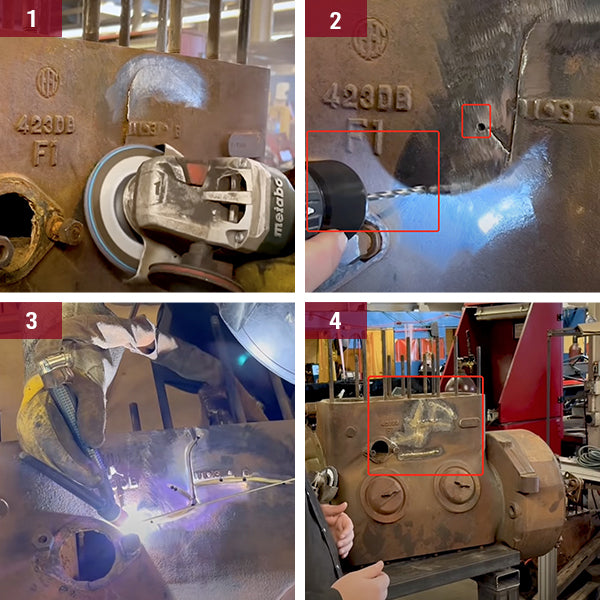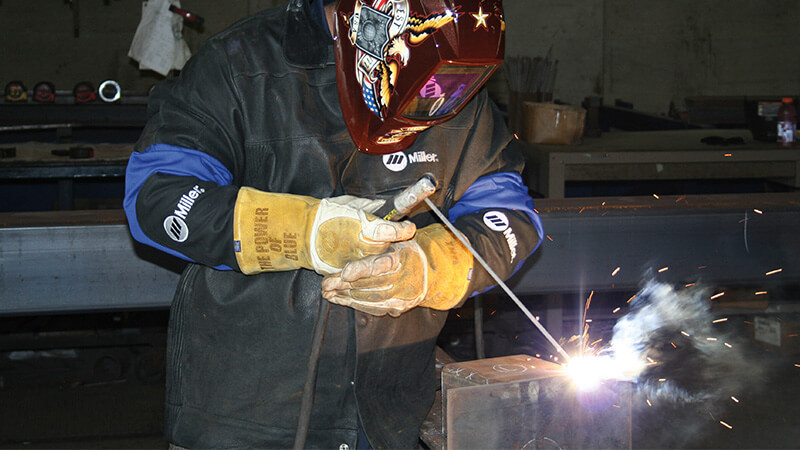Common weld defects Montana Mobile Welding and Repair Belgrade Welding helps eliminate
Wiki Article
All About Welding: Trick Insights Into Techniques and Ideal Practices for Success
Welding incorporates a selection of methods, each fit for particular materials and applications. Comprehending these methods, such as GMAW, SMAW, and TIG, is essential for attaining suitable results. In addition, the best devices and security techniques can not be forgotten. As prep work and repairing play critical functions in the welding process, grasping these elements can considerably enhance the high quality of the last item. What are the crucial variables that ensure a successful weld?Comprehending Different Welding Strategies
Welding techniques include a selection of techniques, each suited to certain applications and products. Amongst one of the most common techniques are Gas Steel Arc Welding (GMAW), Shielded Steel Arc Welding (SMAW), and Tungsten Inert Gas Welding (TIG) GMAW, also called MIG welding, is prominent for its rate and flexibility, making it optimal for thin materials. SMAW, or stick welding, is favored for its simpleness and effectiveness in outside settings, especially with thicker steels. TIG welding supplies precision and control, making it suitable for detailed job and non-ferrous steels (Montana Mobile Welding and Repair Welding). Each strategy has its distinct benefits and considerations, permitting welders to choose the ideal method based upon the job's requirements, product kind, and preferred outcomes. Understanding these methods is vital for successful weldingVital Welding Devices and Tools
While different welding methods need details skills, the right equipment and devices are similarly crucial for attaining high quality results. Important welding devices includes welding makers, which vary depending upon the technique-- such as MIG, TIG, or stick welding. Safety gear, consisting of helmets, aprons, and handwear covers, warranties security and comfort throughout the procedure. Furthermore, components and clamps help secure products in position, making sure accuracy in welds. Consumables like welding rods, cord, and protecting gas are additionally vital parts that affect the quality of the weld. Devices such as mills and cutters assist in surface prep work and post-weld completing, contributing to a professional end result. Purchasing top quality tools eventually improves the efficiency and efficiency of welding projects.Safety And Security Practices in Welding
Proper safety and security methods are important in the welding industry to safeguard workers from prospective threats. Welders have to use appropriate personal protective equipment (PPE), consisting of headgears with appropriate shading, gloves, and flame-resistant garments. Sufficient air flow is essential to lower exposure to hazardous fumes and gases generated throughout the welding procedure. Furthermore, employees need to be learnt the appropriate handling of welding devices to avoid mishaps. Fire precaution, such as keeping flammable products far from the welding area and having fire extinguishers conveniently available, are needed. Regular inspections of devices and work areas can assist identify prospective hazards prior to they cause accidents. By sticking to these safety methods, welders can create a much safer working atmosphere and lessen dangers connected with their trade.Preparing Materials for Welding
Preparing products for welding is an essential step that substantially affects the quality and integrity of the end product (Montana Mobile Welding and Repair Belgrade Welding). Appropriate preparation includes cleansing the surface areas to eliminate impurities such as rust, oil, and dust, which can compromise the weld. Techniques such as grinding, fining sand, or making use of solvents are frequently used to accomplish a clean surface. Additionally, making sure that the products fit together well is important; voids can cause weak welds. It's also essential to take into consideration the placement and positioning of the components, as this will influence the simplicity of welding and the last end result. Lastly, picking the appropriate filler material and making certain compatibility with the base steels is crucial for attaining strong, resilient weldsTips for Getting High-Quality Welds
Accomplishing premium welds requires attention to information and adherence to finest techniques throughout the welding procedure. Proper joint preparation is necessary, making sure surfaces are clean and cost-free from pollutants. Choosing the proper filler product and welding technique based upon the base steels is essential for ideal bonding. Keeping consistent travel speed their explanation and angle while welding can avoid flaws and advertise harmony. Furthermore, controlling warm input is essential; extreme heat can bring about warping and damaged joints. If necessary, regularly inspecting the welds during the process permits for immediate modifications. Lastly, using appropriate post-weld treatments, such as cleaning and stress alleviation, can improve the toughness and integrity of the weld, eventually ensuring a successful result.Troubleshooting Typical Welding Issues
Welding commonly offers obstacles that can affect the top quality and honesty of the end product. Typical problems such as porosity, irregular weld grains, and overheating can occur, each requiring certain repairing methods. Understanding these problems is essential for welders to improve their abilities and accomplish perfect results.Porosity Issues Discussed
Although porosity can usually be neglected, it continues to be an essential problem in welding that can jeopardize the integrity of a finished product. Porosity describes the visibility of little gas pockets within the weld grain, which can deteriorate the joint and lead to early failing. This trouble commonly occurs from impurities, moisture, or incorrect shielding gas coverage throughout the welding procedure. To reduce porosity, welders need to confirm that the base products are completely dry and tidy, utilize appropriate securing gases, and preserve consistent welding parameters. Frequently inspecting the tools and environment can also aid identify prospective problems before they manifest in the weld. Attending to porosity effectively is essential for accomplishing strong, durable welds that fulfill quality criteria.
Irregular Weld Beans
Irregular weld beads can considerably impact the quality and stamina of a completed product. Various elements add to this problem, consisting of incorrect travel speed, inaccurate amperage setups, and irregular electrode angles. When the welder relocates also quickly, a bead may appear narrow and do not have infiltration, while relocating too slowly can trigger extreme build-up. Additionally, utilizing the incorrect amperage can cause either undercutting or extreme spatter, both of which compromise weld stability. The welder's method, such as inconsistent lantern motion, can additionally lead to uneven grain appearance. To alleviate these issues, welders need to concentrate on keeping consistent, controlled movements and guaranteeing proper devices setups to attain harmony in their welds. Uniformity is crucial to achieving reputable and solid welds.Overheating and Warping Issues
Excessive warm throughout the welding procedure can result in significant overheating and buckling issues, affecting the structural honesty of the work surface. These troubles commonly materialize as distortion, which can jeopardize placement and fit-up, making more setting up challenging. Variables adding to overheating consist of the option of welding parameters, such as voltage and take a trip speed, along with the sort of material being bonded. To mitigate these problems, welders should maintain regular traveling rate and ideal heat input while monitoring the work surface temperature level. Additionally, pre-heating or post-weld warmth treatment can help reduce why not try this out tensions brought on by rapid air conditioning - Welding. Routine inspection and adherence to ideal practices are important in protecting against overheating and ensuring the long life and dependability of bonded structuresFrequently Asked Concerns
What Are the Career Opportunities in the Welding Market?
The welding sector offers varied career possibilities, including placements as welders, educators, engineers, and inspectors. Specialists can operate in production, building, aerospace, and automobile markets, benefiting from solid need and affordable incomes in numerous roles.How Can I Boost My Welding Rate Without Giving Up Quality?
To boost welding speed without sacrificing quality, one must exercise effective methods, preserve equipment, enhance settings, and boost hand-eye sychronisation. Regular training and looking for comments can also substantially add to attaining faster, high-grade welds.What Accreditations Are Available for Welders?
Various certifications exist for welders, consisting of those from the American Welding Culture (AWS), the National Facility for Building Education And Learning and Research Study (NCCER), and different industry-specific organizations. These credentials improve employability and show skill effectiveness.Just How Does Welding Influence the Characteristics of Metals?
Welding affects the residential or commercial properties of steels by altering their microstructure, which can lead to changes in ductility, hardness, and stamina. Heat input and air conditioning rates during the process considerably affect these material characteristics.Can I Bonded Dissimilar Metals Together?

Report this wiki page